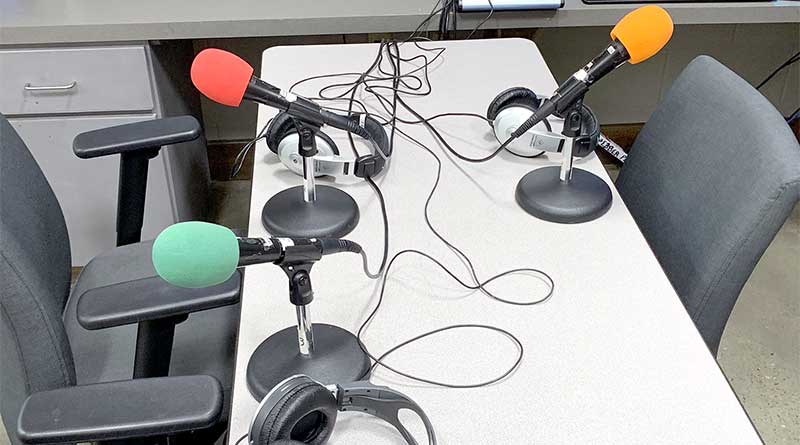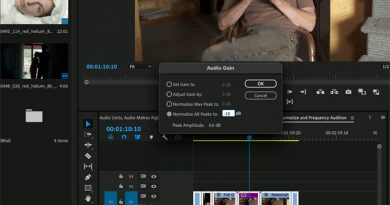Podcast on a budget – Inexpensive Microphones Work Great

This is the first of a multipart series on podcasting for publication staffs.
With thousands of student newspaper and publication staffs online the opportunity to expand into storytelling via audio and video is readily available.
One such means of storytelling is through an audio production known as a podcast.
According to the Merriam-Webster online dictionary, podcasting is a program (as of music or talk) made available in digital format for automatic download over the internet.
While podcasts are often created as a series built around a theme, they can also be one-off productions.
In my journalism program, the majority of podcasts take the form of one-off productions, with different groups creating them yearly. One student last year created a podcast series of movie reviews. (Click here for Movie Matters.)
I first involved my program with podcasting after my fellowship with ASNE’s Reynold’s Institute in 2009.
We started recording podcasts on a video camera, removing the video portion during editing. Eventually, we obtained appropriate equipment, including four microphones and mic stands, an eight-channel mixer that feeds into Adobe Audition on our workstation, and headphone amplifier.
In discussions leading to the equipment purchase, the principal and I agreed that our students should have the opportunity to use near-professional or professional equipment for audio productions.
In general are a variety of microphones available for live and recorded use, but many who podcast in a school setting may benefit from inexpensive equipment that takes the hard use teens can dish out over many years.
Upon the advice of two colleagues who teach music, I bought Shure SM-48 microphones. At the time I bought them a few years ago from Guitar Center the four each included a 25-foot XLT-to-XLT cord, mic stand adapter, and a storage pouch.
Shure literature states the SM-48 is made for the speaking voice, and comes with a built-in “pop” filter that reduces explosive breath sounds and wind noise. (I use external pop filters of different colors to keep students from putting their mouths on the mics.)
What makes this Shure model a good choice, in my experience using it, is its pick-up pattern. It is known as a cardioid mic. With a cardioid pattern, one speaks directly into the front of the microphone for best recording results.
Thus, for the small room we use for audio productions, cardioid mics are an excellent choice due to their proximity.
Up Next: Why using headphones are important.






I’m just starting to plan a broadcast class. What do you connect these mics to?
Thanks